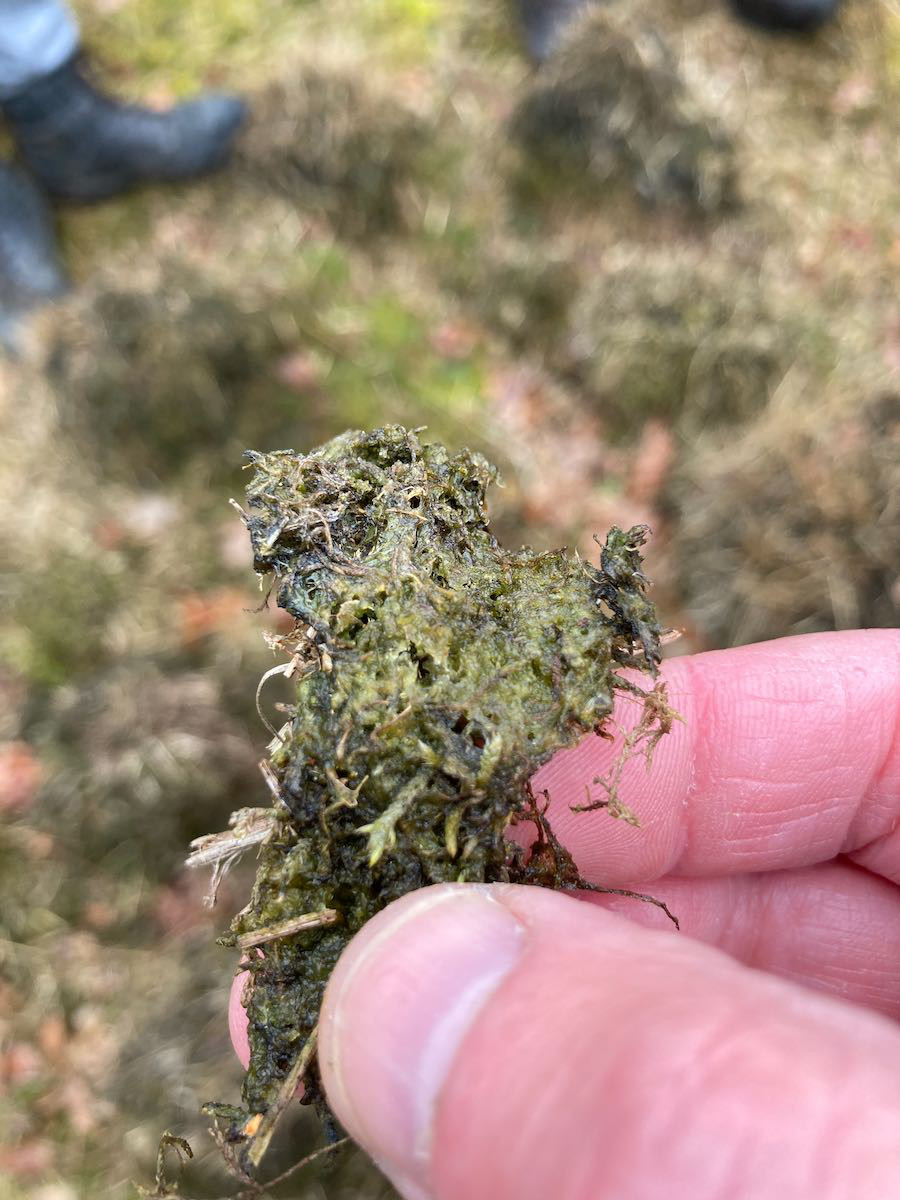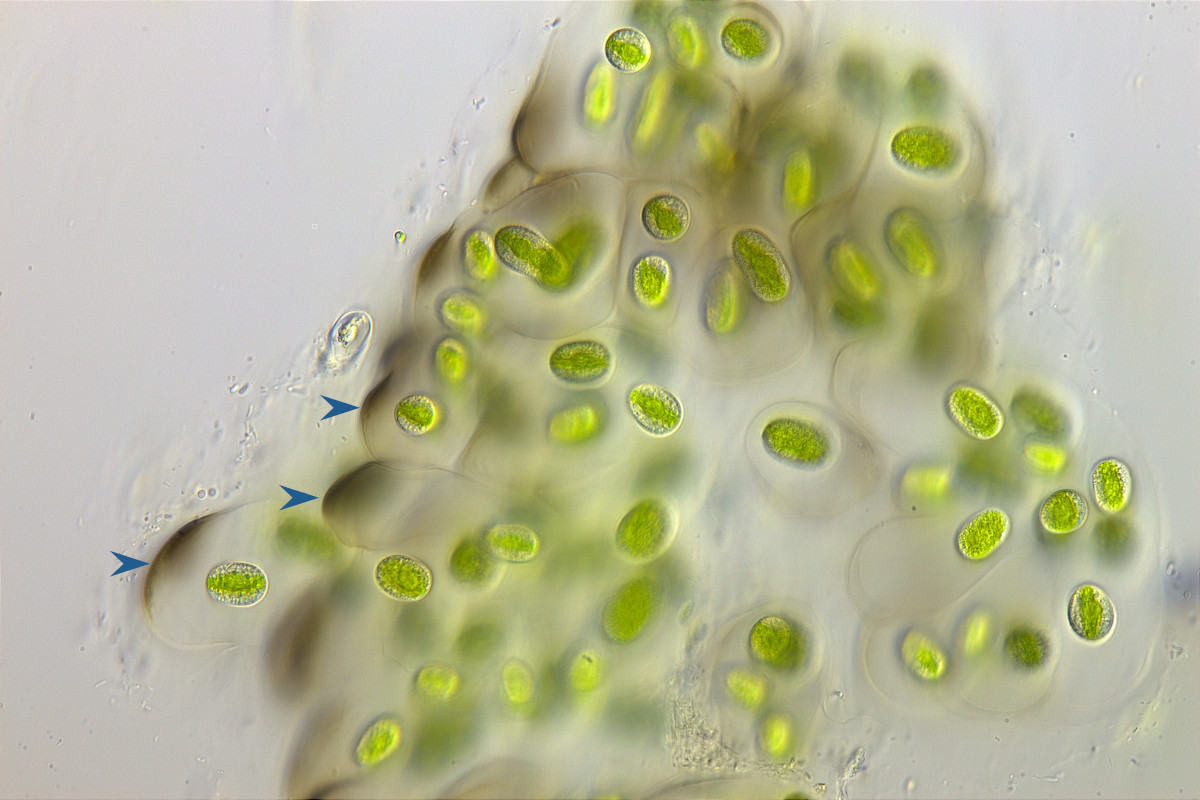Algae can be found practically anywhere in water and on land. Land living algae colonize rocks, mosses, and also higher plants. Unicellular algae are considered ancestors of land plants. As such they face certain challenges.
Serritaenia sp., a unicellular green algae has developed a very special strategy: This genus grows as an epiphyte on moss cushions and gives them a blackish colour as they were burnt. The coloring is the result of a special strategy of the alga, that has developed a sun protection for protists. A special dye is secreted in a gelatinous shell, which acts like a shield against intense solar radiation. The discovery of this sunscreen was recently published for the first time by Anna Busch and Sebastian Hess.
Figure 1: Certain mosses collected in the sandy heathland in Germany, look as if they were burnt, showing black color. Contrary to this the root cause of the black color is a pigment produced by the unicellular alga Serritaenia sp. which grows like an epiphyte on mosses.
Figure 2: Microscopic picture of Serritaenia sp.: In the gelatinous shell enclosing the unicellular alga a dark pigment is produced in the direction of the incidence of light (arrow). It filters out certain wavelengths of light and thus reduces the intense light radiation towards the unicellular alga. It is true, this alga invented kind of a sunscreen.
Literature
- Busch, A., & Hess, S. (2022). Sunscreen mucilage: a photoprotective adaptation found in terrestrial green algae (Zygnematophyceae). European Journal of Phycology, 57(1), 107-124.


